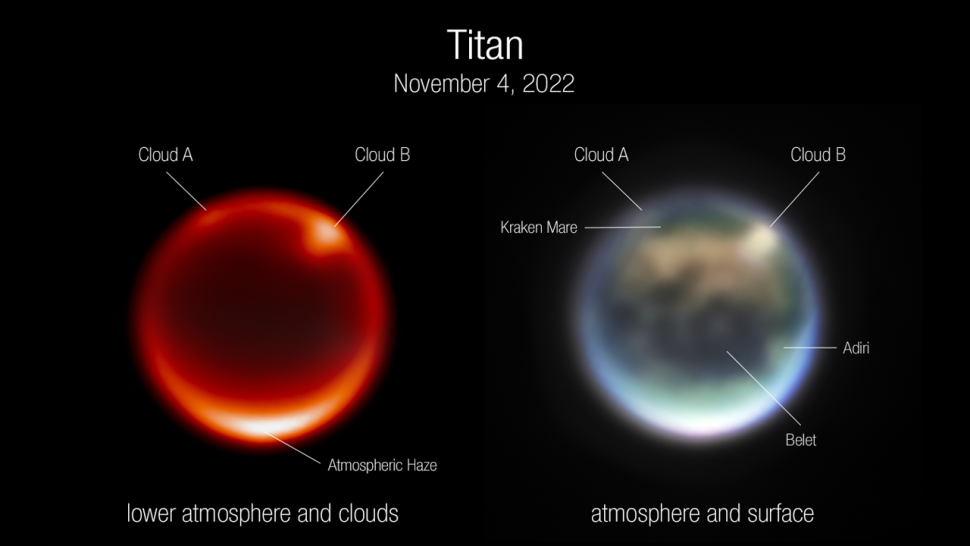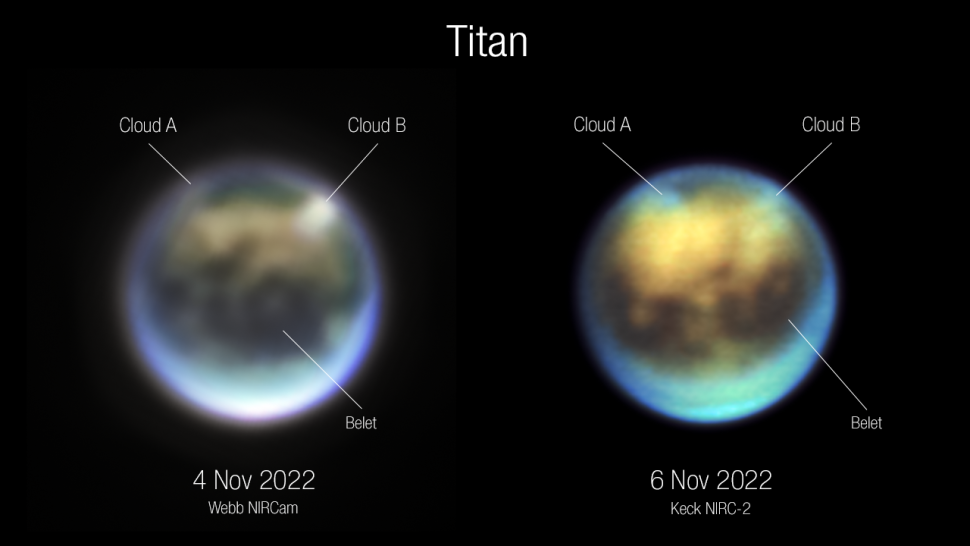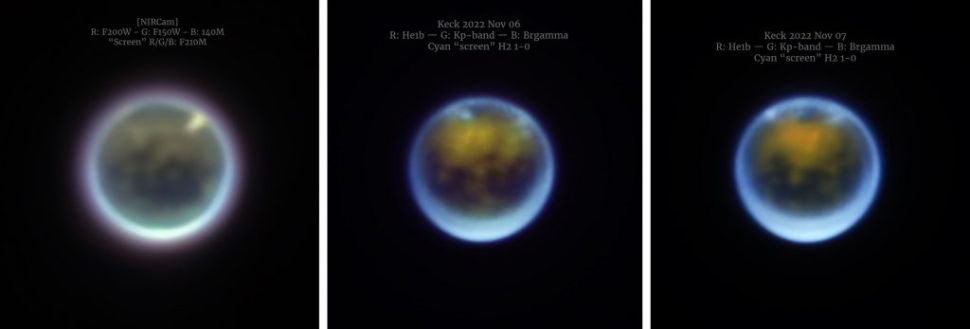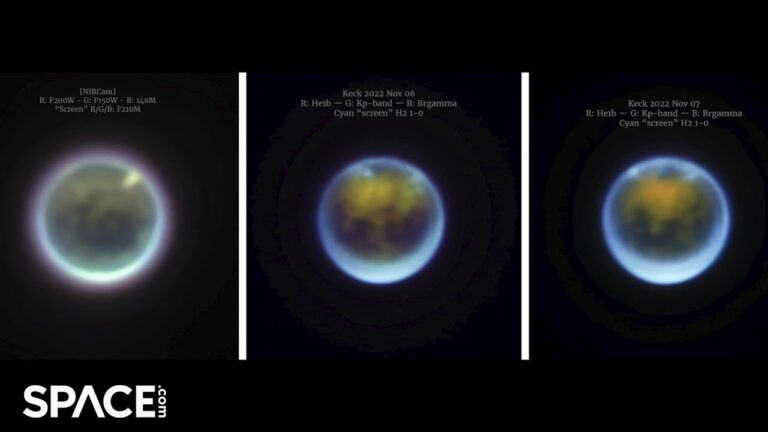Scientists are amazed by the glimpse of Saturn’s strangest moon Titan from the James Webb Space Telescope.
Titan, the biggest moon of Saturn, has had a foggy season.
Titan is a bizarre planet, somewhat resembling Earth in that it has water ice for land, liquid methane and other hydrocarbons for rivers and seas, and a thick, hazy atmosphere that is peppered with methane clouds. According to a NASA release, the James Webb Space Telescope (Webb or JWST) has already detected two of those clouds during observations on Nov. 4.
“Fantastic! I like how there are clear albedo markings and clouds, “Regarding glimpses of bright and dark regions of Titan’s surface, Heidi Hammel, a planetary scientist at the Association of Universities for Research in Astronomy and the project leader for JWST’s solar system work, wrote in an email that was included in the statement.

Titan will be studied by JWST for a total of 15 hours during its first year, according to an arrangement made by astronomer Conor Nixon of NASA’s Goddard Space Flight Center in Maryland. Nixon’s crew was particularly interested in Titan’s atmosphere because it would allow them to, among other things, map the haze’s distribution and find new gases.
The data that JWST supplied the scientists also made them very happy. Sebastien Rodriguez, an astronomer at the Université Paris Cité and the study’s co-author, commented in an email that was included in the announcement, “At first look, it is just astonishing.” We may be witnessing a cloud, I believe.
The researchers combed through the data and found not one, but two clouds, one of which was, intriguingly, above Kraken Mare, the biggest of Titan’s oceans. The researchers were immediately motivated to devise a means of returning to those clouds in order to track their evolution. The group contacted the Keck Observatory in Hawaii, and it was successful in securing views of Titan two days following JWST.

Imke de Pater, an astronomer at the University of California, Berkeley who oversees Keck’s views of Titan, said in the release, “We were worried that the clouds would be gone when we looked at Titan two days later with Keck.” But much to our pleasure, there were clouds in the same places that appeared to have changed shape.
Even yet, it’s not a guarantee that Keck and JWST spotted the same clouds. Because Titan’s northern hemisphere is experiencing late summer and is receiving more solar energy, scientists anticipated significant cloud activity; hence, Keck’s clouds may have been newly produced.
The observations are still being mined by the scientists. They recognized the clouds in photos acquired by JWST’s Near-Infrared Sensor (NIRCam), a sophisticated camera that can photograph an object in a variety of light wavelengths, allowing researchers to distinguish the lower atmosphere of Titan.

The data from NIRCam hasn’t even been fully analyzed by the researchers, and a second device was also in use. The Near-Infrared Spectrograph (NIRSpec) of the observatory collected spectra. This method divides light reflected off surfaces, such as Titan’s atmosphere, and counts the quantity of each wavelength. The spectra should enable researchers to trace the chemical composition of the lower atmosphere, which includes a puzzling bright spot above the south pole of the moon.
According to the announcement, JWST will also return to Titan in May or June 2023. This time, it will use its Mid-Infrared Instrument (MIRI), which will help scientists better comprehend the substances in the moon’s unusual, hazy atmosphere.
In the interim between spacecraft visits to the frozen moon, observations of Titan are particularly crucial. Before its destruction in 2017, NASA’s Cassini mission reached Saturn in 2004 and made more than 100 passes by the moon. Additionally, NASA is developing a brand-new mission dubbed Dragonfly that is focused on Titan and will send a drone through the cloudy sky so that scientists may observe the moon from around two dozen different angles.





0 Comments